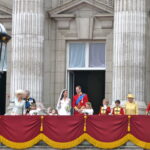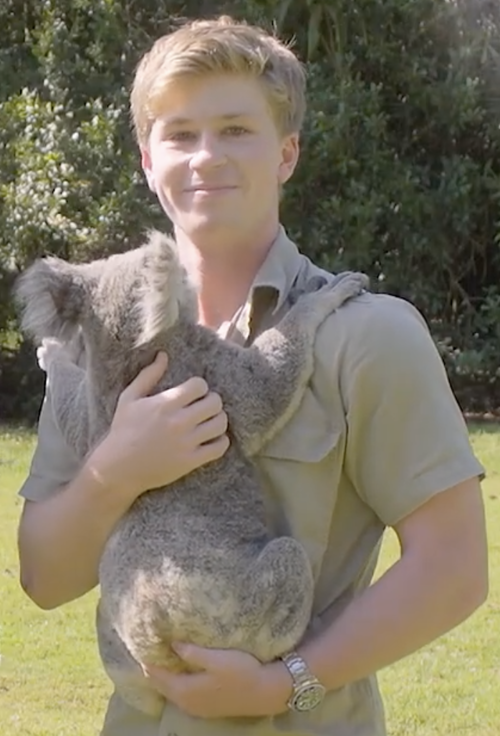On this special Mothering Sunday, the Palace has offered a nostalgic glimpse into royal family history by sharing a vintage photo featuring Queen Elizabeth II with her eldest children, King Charles and Princess Anne. The cherished image, taken at the 1956 Royal Windsor Horse Show, not only serves as a loving tribute to a remarkable monarch but also resonates deeply with those celebrating Mother’s Day and the enduring legacy of maternal love across generations.
The black-and-white photograph captures a tender moment from decades past. In the image, a young Charles and Anne are seen sitting close to their mother—then in her twenties—who appears to be sharing something special from a notebook with the young prince. Princess Anne, with an expression of quiet curiosity, looks on, highlighting a rare glimpse into the royal family’s private life. This vintage snapshot, now shared on the official royal Instagram account, is more than just a nostalgic throwback; it is a celebration of Queen Elizabeth’s pivotal role as both a leader and a loving mother.
For many, the post comes as a bittersweet reminder of the late monarch’s influence on the British monarchy. Nearly three years after her passing, King Charles has openly admitted that he deeply misses his mother, Queen Elizabeth II, especially on Mother’s Day—a day that is synonymous with love, remembrance, and gratitude for maternal figures. The timing of the tribute, on March 30, adds extra poignancy as Mothering Sunday in the United Kingdom, a day that honors the mothers who have shaped lives with their kindness and resilience.

The caption accompanying the photo reads, “Wishing all mothers, and those who are missing their mums today, a peaceful Mothering Sunday.” This simple yet heartfelt message extends the royal family’s sympathy and support to millions across the nation who continue to feel the loss of their own loved ones. It is a reminder that while the world of royalty may seem distant and formal, at its core, it is filled with genuine affection and a shared understanding of loss and remembrance.
Adding to the sentiment, the Palace’s post also featured a second image paying tribute to Queen Camilla’s late mother, Rosalind, alongside her eldest grandson, Tom. This gesture of honoring multiple generations of strong women underscores the royal family’s commitment to celebrating the essential role that mothers and maternal figures play in shaping both public service and personal lives. Through these carefully curated visuals, the Palace connects the past with the present, reinforcing the timeless nature of familial love and duty.
Queen Elizabeth II’s reign began in 1952, a period that marked the start of a new era for the British monarchy. As the first child of her own legacy, King Charles and Princess Anne were raised in an environment steeped in royal duty, tradition, and an unwavering commitment to service. Their mother’s gentle guidance and unwavering strength were instrumental in molding their characters, and her influence is still palpable in the values and responsibilities they continue to embody today.
The vintage photograph not only captivates with its aesthetic beauty but also tells a broader story about the evolution of the royal family. It offers an intimate look at the upbringing of the future king and his sister, set against the backdrop of royal events and historic milestones. At the 1956 Royal Windsor Horse Show, a prestigious event that brought together equestrian excellence and aristocratic elegance, Queen Elizabeth II was already demonstrating the poise and dedication that would define her reign. Her ability to balance state affairs with the warmth of family life is a quality that continues to inspire many, both within and outside the corridors of Buckingham Palace.

For King Charles, the memory of his mother is a constant source of strength. His recent admission of missing Queen Elizabeth on Mother’s Day is a poignant reminder of the personal sacrifices made by those in the royal family. The grief he feels is not just that of a leader burdened with public duty, but also that of a son who deeply valued the wisdom and nurturing care of his mother. This emotional revelation has struck a chord with many who see in it a universal truth about the irreplaceable role of a mother in our lives.
In addition to the emotional resonance of the royal tribute, the shared images serve a broader cultural purpose. They function as a time capsule, preserving the fashion, customs, and familial dynamics of an earlier era. For historians, royal enthusiasts, and social commentators, the photograph is a rare opportunity to reflect on how the British monarchy has evolved over the decades. It invites comparisons between the lives of past royals and the present generation, highlighting both continuity and change within one of the world’s most storied institutions.
Moreover, the post’s dual focus on both Queen Elizabeth and Queen Camilla’s mother, Rosalind, enriches the narrative by showcasing the significance of maternal figures in nurturing leadership and legacy. In doing so, it bridges different branches of the royal family, underscoring that the impact of a mother’s love is not confined to one lineage alone. Whether it is the late Queen’s guidance that set the stage for a modern constitutional monarchy or the quieter influence of Rosalind that shaped the character of Queen Camilla, both women have left indelible marks on their families and, by extension, on the history of the United Kingdom.
Social media has played a pivotal role in bringing this message of remembrance and unity to a broader audience. The royal Instagram account, known for its carefully curated images and thoughtful captions, reaches millions of followers around the world. In a time when digital platforms have become the new public square, such posts ensure that even the most private moments of royal life are shared with a sense of dignity and inclusivity. The use of hashtags and keywords related to Mother’s Day, vintage photos, royal family, British monarchy, and royal legacy helps to disseminate the message widely, resonating with audiences from various demographics and cultural backgrounds.
This multifaceted tribute is not only a celebration of historical significance but also a call to acknowledge the strength and resilience of women who have shaped our lives. From the leadership of Queen Elizabeth II to the nurturing influence of Rosalind, the stories embedded in these images are reminders that behind every great leader is an even greater maternal force. For many, these photos evoke memories of their own mothers—those who provided comfort during turbulent times, who offered guidance when the path was unclear, and who demonstrated unconditional love regardless of circumstance.

In many ways, the Palace’s initiative to share these vintage snapshots is an invitation to reflect on the broader cultural impact of the royal family. Beyond the pageantry and protocol, there is a deeply human story about loss, legacy, and the enduring power of love. It is a narrative that transcends the bounds of tradition and resonates with anyone who has ever experienced the warmth of a mother’s embrace or the pain of her absence.
The significance of the photograph is further amplified by its historical context. Captured in 1956, the image is a visual record of a time when the British monarchy was undergoing profound changes. The post-war era brought new challenges and opportunities, and Queen Elizabeth II’s ascent to the throne symbolized a fresh start—a new chapter in the evolution of a storied institution. The photograph is not merely a reminder of a bygone era; it is a testament to the enduring spirit of the royal family and the timeless influence of maternal love.
As the United Kingdom celebrates Mothering Sunday, this heartfelt tribute from the Palace resonates on multiple levels. It is an acknowledgment of the sacrifices made by a beloved monarch, a celebration of the lives she nurtured, and a reminder that the bonds of family—especially the bond between a mother and her children—are eternal. The message is clear: even as time moves forward and traditions evolve, the legacy of a great mother continues to inspire and uplift those who remain.
In closing, the vintage photo of Queen Elizabeth II with King Charles and Princess Anne is more than just an image; it is a living memory of a woman who played an unparalleled role in shaping the modern British monarchy. It is a celebration of her maternal grace, her commitment to duty, and the profound impact she had on her family and the nation. On this Mothering Sunday, as people across the United Kingdom and beyond honor their mothers and maternal figures, the Palace’s tribute serves as a powerful reminder that true legacy is measured not by time, but by the love and values passed down through generations.
Keywords such as Palace, vintage photo, Queen Elizabeth, King Charles, Princess Anne, Mother’s Day, Mothering Sunday, British monarchy, royal family, legacy, royal Instagram, Royal Windsor Horse Show, throwback photo, tribute, strong women, remembrance, royal duty, official Instagram, black-and-white photo, historic image, royal history, monarchy, family legacy, maternal love, touching moment, nostalgic memory, timeless tribute, emotional remembrance, social media post, royal tribute, commemorative photo, regal family, and many more have been thoughtfully woven throughout this narrative. Each term is a nod to the multifaceted story of a family that has shaped history through love, resilience, and the enduring strength of its mothers.
This article is a heartfelt reflection on the enduring impact of Queen Elizabeth II’s legacy, an intimate look at the private moments that define a public life, and a celebration of the mothers who continue to inspire generations. It is a tribute that will remain etched in the collective memory of those who revere not only the institution of the British monarchy but also the universal values of love, duty, and familial devotion.










